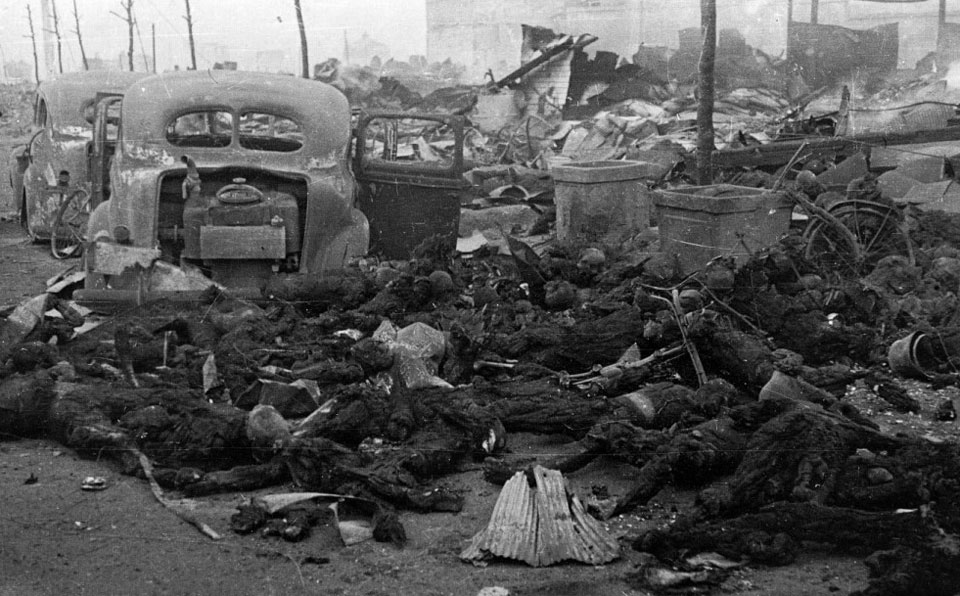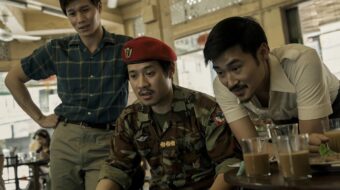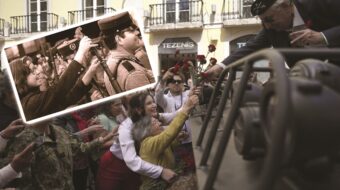
It was early in the morning and 7-year-old second-grader Michiko Kodama was learning her lessons with her classmates when the life she knew—the world she knew—came suddenly to an end.
There was a blinding flash of light and an enormous explosion. The school roof fell in, literally. The windows shattered into hundreds of shards of glass. Many impaled her, leaving her dazed and bleeding. When she made it to the nurse’s station, there were no medicines, bandages, or gauze to help heal her.
Kodama, you see, was a schoolgirl in Nagasaki, Japan, that day, August 9, 1945, when the U.S. dropped an atomic bomb on that Japanese city, her home. It exploded 600 meters above and several blocks away from the school, and changed her life forever. It was the U.S.’s second A-bomb on Japan after the destruction of Hiroshima three days before.
Kodama, now 81, brought her story—with pictures—to a meeting in D.C. on August 5, remembering the carnage wrought by those two bombs, which U.S. warplanes let loose. The two bombs ended World War II, but they also left hundreds of thousands of people dead, then and down through the years.
And they left survivors, such as Kodama, a polite slim woman who does not look her age, and who is now secretary-treasurer of a worldwide confederation of nuclear bomb survivors, to lead a movement to ensure such obliteration never happens again. They’re campaigning for the elimination of all 13,586 nuclear weapons the nations of the world hold.
Kodama, now a grandmother, saw even worse after her father came to the school to get her.
“I saw a mother carrying her baby and it was totally burned,” she said. “She was heavily burned herself. I saw people along the road holding their intestines in their hands and begging ‘water, water, water.’ But we had to leave them there. There was no water, and we were unable to help them.”
Kodama and her father returned home, but days later, authorities ordered them to leave to help create a firebreak against the raging blazes the atomic bomb unleashed upon Nagasaki. Officials then bulldozed the house, which was almost directly at Ground Zero, she said. The family moved 3.5 kilometers away and Kodama had to switch schools.
“But had we not moved, I would not be here today to tell this story” due to the intense radiation at her home’s site. “And some 400 people in my school vanished without a trace—not even bones.”
Others, like “my favorite cousin,” suffered and perished. “Half her face and one of her legs were blown away. Maggots were crawling all over her burned flesh. She died three days later, in my arms.”
The carnage did not stop in the immediate days after the blast of the two bombs and the release of their nuclear radiation. Kodama grew up, married, and bore two daughters, all the while worrying if they too would suffer. The oldest one did, dying eight years ago of cancer transmitted from residual radiation her mother suffered. The daughter was 45.
Kodama’s tale, plus one from the U.S., were the key features of the D.C. meeting, one of many around the nation during the week of August 5-9 to remember those days, honor the memories of those who died, and campaign for complete dismantlement and destruction of nuclear weapons.
The campaign, understandably, is led by the citizens of Hiroshima, but it has attracted peace and anti-nuclear adherents from New York to Nagano. In the U.S., several state legislative chambers and city councils, including D.C. and New Jersey, have responded by passing resolutions demanding Congress ratify a proposed treaty to rid the world of the nukes.
U.S. citizens die from atomic radiation, too, said Dennis Nelson, a retired research biochemist. His hometown, St. George, Utah, was downwind—east—of the U.S. government’s top-secret Nevada test site, established in 1951.
The feds found out oceanic testing of atomic and, later, hydrogen bombs was too expensive, he told the D.C. group. So they moved the tests inland, but made sure the site was northwest of Las Vegas and northeast of Los Angeles, Nelson noted.
That left the prevailing winds to carry the radiation from those bombs, detonated in the 1950s, 1960s, and early 1970s, eastwards. The nuclear radiation fallout rained on St. George—so much so that cars passing through town had to be hosed down—and all the way to the East Coast.
And of the eight children in Nelson’s non-smoking non-drinking Mormon family, five have died, all of radiation-caused cancers. Their average age: 53. Victims eventually discovered the cause of the cancers and sued as a class in federal court, he noted. The government won at the U.S. appeals court in Denver, even though it withheld evidence, and the victims “never got a penny.”
It’s not just Hiroshima and Nagasaki abroad, another speaker added. Radiation from the nuclear reactor explosions at Chernobyl, Ukraine, and Fukushima, Japan, and downwind from the old Soviet nuclear test site in Kazakhstan has also claimed thousands of lives.
But while citizens worldwide campaign for abolishing nuclear weapons, governments may not be listening. Former GOP President George W. Bush took a big step in the other direction—promoting them—by ending the anti-ballistic missile treaty, noted D.C. session moderator John Steinbach of the Hiroshima-Nagasaki Peace Committee of the National Capital Area.
U.S. President “Richard Nixon understood the need to limit” the bombs, he said. Soviet Union Premier “Leonid Brezhnev understood. Bush didn’t.”
And just three days before the commemoration began, GOP President Donald Trump ended U.S. participation in a treaty limiting intermediate-range nuclear missiles. Trump charged, without offering any proof, that the globe’s other leading nuclear power, Russia, is violating it.
Further, Kodama said, the current right-wing Japanese government “is more interested in being an ally” of the U.S. than it is in abolishing nukes, even though the Japanese Constitution, written by U.S. officials during the post-World War II occupation, not only bans such bombs but also bars Japan from having an offensive standing army.
That doesn’t stop Kodama and the campaigners this week, or ever. They keep remembering Nagasaki and Hiroshima and urge citizens to lobby their governments to ban the nukes. They achieved a notable win two years ago when Pope Francis I publicly condemned possession of all nuclear weapons. Just limiting nukes won’t do, though, one D.C. speaker said.
“Communities have refused to say we can only go down halfway from destruction,” he explained.












Comments